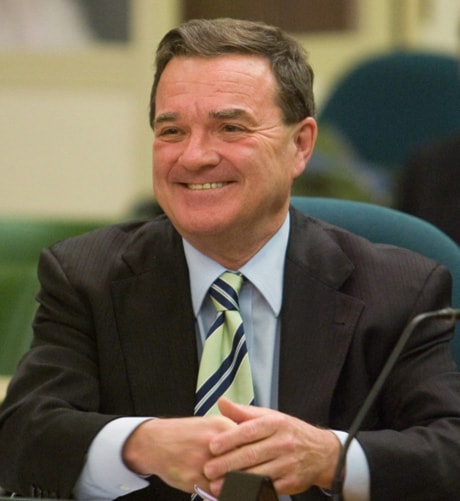OTTAWA — New rosier outlooks for the Canadian economy are giving a welcome boost to the federal government’s prospects for coming out of the deep deficit hole within a few years.
The most recent batch of economic reports have seen a number of respected private sector institutions revise their projections for the world and Canadian economies.
That’s not unusual, but what is new is that for the first time in about a year Ottawa is revising its projections for growth upwards and for unemployment downwards.
Citing recent Bank of Nova Scotia and Royal Bank updates, Finance Minister Jim Flaherty said he is encouraged that the Canadian economy is on the mend and that his plan to get out of deficit in four years is on track.
As well, Global Insight and the TD Bank published new forecasts Tuesday, each showing an improvement over their previous outlooks.
“We are seeing some good signs we will move out of this deep recession later this year and have positive growth next year, (and) that means positive revenues,” he said Tuesday morning.
With the exception of the TD Bank, which remains the outlier on the pessimism scale, all see Canada’s economy rebounding to a moderate but solid rate of about 2.5 per cent next year.
None forecast what some analysts feared as recently as a month ago, which is a double-dip pattern that would see the economy riding on the back of massive government stimulus spending (about $80 billion in Canada if provincial budgets are included) only to dive back into the deep once government money runs out.
TD Bank chief economist Don Drummond said the fears of a double-dip recovery are fading, although he still believes the rebound will be more muted than many other analysts are assuming. His prediction is for 1.4 per cent growth next year.
“There will still be some lingering problems, but U.S. housing will be recovering and we will get to the bottom of the write-offs in the banking sector,” he explained.
Drummond concedes he has been surprised by a number of recent developments, particularly in the United Sates, and is willing to admit there is a risk his new outlook may be overly cautious.
“Basically an atomic bomb blew up on the American banks, and they are still standing,” he said, noting a group of banks have raised US$75 billion in 10 days in order to pay back government bailout money.
“I would not have anticipated that,” he added. “The other piece of really good news is that for all intents and purposes the short-term credit markets have returned to normal.”
Ending the financial crisis has been regarded as the prerequisite for recovery because without access to loans, businesses will be unable to finance operations or expansion and households will be unable make large purchases such as homes and automobiles.
Royal Bank economist Paul Ferley believes the availability of cheap credit should be able to carry economic growth forward once government stimulus has run out.
“We’re assuming the cost of capital continues to move down and that starts supporting the economy in 2011, so you have growth continuing and possibly accelerating,” Ferley said.
The finance minister said a resumption of economic growth is a key ingredient to returning to a balanced budget position. The budget projects that will happen in 2013-2014.
The other key is for government stimulus to end next year, Flaherty said, noting that the vast majority of spending announced in the budget and afterwards, including the auto bailout and infrastructure spending, has a maximum “use it, or lose it” two-year window.
Even with the upward revisions, several economists, including Drummond, question whether Ottawa will escape from the deficit hole when it says.
The TD’s most recent estimate was that it would take at least six years — two more than Flaherty asserts — and that the accumulated debt will rise to $172 billion, twice the budget’s number.
Nothing in the new projections alters that picture sufficiently to have it agree with the government, because they are only marginally better than previously reported.
In broad strokes, the new projections follow the pattern of previous forecasts. They show an economy in the midst of slowing its descent and bottoming out in the July-September period of this year before starting a slow ascent. They also show job losses continuing throughout the year and possibly into 2010.
Both Global Insight and TD see the unemployment rate peaking near 10 per cent in the second half of next year, when the economy will have already started growing. The jobless rate is currently 8.4 per cent.
So far, 363,000 net jobs have been lost since the downturn began last October, lifting the jobless rate to 8.4 per cent, an 11-year high.
Speaking to reporters, Flaherty said the employment picture would have been bleaker but for the budget’s spending program.
Using the metric employed by the Federation of Canadian Municipalities, he said the government will have created or saved about 132,000 jobs over the course of this year.
As well, the minister said there has been a dramatic increase in job sharing during the recession to 120,000 Canadians, some of whom would be out of work without the improvements to the employment insurance program.
